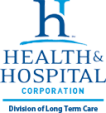Richard M. Fairbanks Burn Center at Wishard Prepares for Fireworks Season
Created on Tuesday, 28 June 2011 15:11
Contact: Collette DuValle, 317-221-2463
Nearly 10,000 firework-related injuries or about 20 people every day are treated in U.S. hospital emergency departments each year, according to the Consumer Product Safety Commission. Statistics also show that most firework-related injuries are burns. These burns often result from improper use of sparklers and other legal and illegal fireworks, and they usually involve the hands, face, eyes, arms and legs.
As firework superstores begin popping up throughout Indiana, among the various types of fireworks, some of which are sold legally in some states, bottle rockets can fly into peoples’ faces and cause eye injuries; sparklers can ignite clothing; and firecrackers can injure the hands or face if they explode at close range. According to the Centers for Disease Control and Prevention, novelty fireworks such as sparklers burn at around 1,800 degrees Fahrenheit, which according to physicians at the Richard M. Fairbanks Burn Center can result in significant burns. Sparklers result in on average over a tenth of all injuries from fireworks.
“Burn prevention is an integral part of the education services our burn center provides for the community. Almost 30 to 40 percent of the burns we see are preventable with the appropriate education,” said Dr. Rajiv Sood, medical director of the Richard M. Fairbanks Burn Center at Wishard and professor of plastic surgery, department of plastic surgery, Indiana University School of Medicine. “Injuries caused by fireworks are the most preventable kinds of burns.”
Many of these injuries could be avoided or minimized by following some simple safety measures. Doctors at the Richard M. Fairbanks Burn Center at Wishard, the only adult burn center that serves central and southern Indiana, recommend that people leave fireworks to the professionals, but if you choose to use fireworks at your home, it is important to take some special precautions.
These precautions include:
- Never re-light a “dud” firework (wait 15 to 20 minutes and then soak it in a bucket of water)
- Never build or experiment with homemade fireworks
- Make sure only adults handle fireworks
- Give children glow in the dark wands and noise makers instead of sparklers
- Read and follow all instructions
- Always have water on hand
- Never take fireworks apart or modify them in anyway
- Check with local police and fire departments to determine which fireworks can legally be discharged in your area
In the unfortunate event that an incident occurs, it is important to respond to the situation immediately. Dr. Sood said if clothing catches on fire, the best way to put out the fire is to “stop, drop and roll.” Once the fire is extinguished, the clothes from the area of the burn should be removed, and the burned area should then be wrapped in a clean, dry dressing or warm blanket. As with any medical emergency, call 911 immediately.
One of only 50 burn centers in the United States verified by the American College of Surgeons and the American Burn Association, the Richard M. Fairbanks Burn Center at Wishard treats more than 350 inpatients and 1,500 outpatients each year. Since 1993, the burn center has seen an increase of approximately 15 percent per year in the number of patients treated. The burn center at Wishard is regarded as one of the finest and most progressive burn centers in the United States, and is located above the Emergency Department and IU/Wishard Level I Trauma Center at Wishard Memorial Hospital.
For more information about firework safety, please call the Richard M. Fairbanks Burn Center at Wishard’s burn prevention hotline at 1-866-339-BURN.





